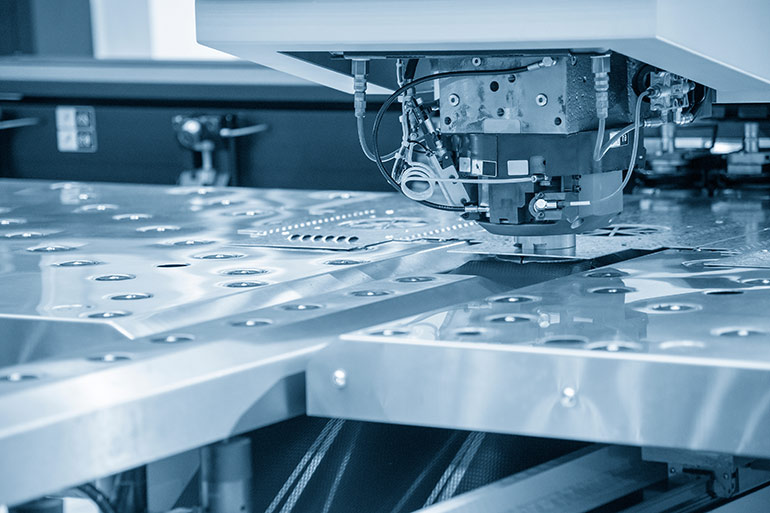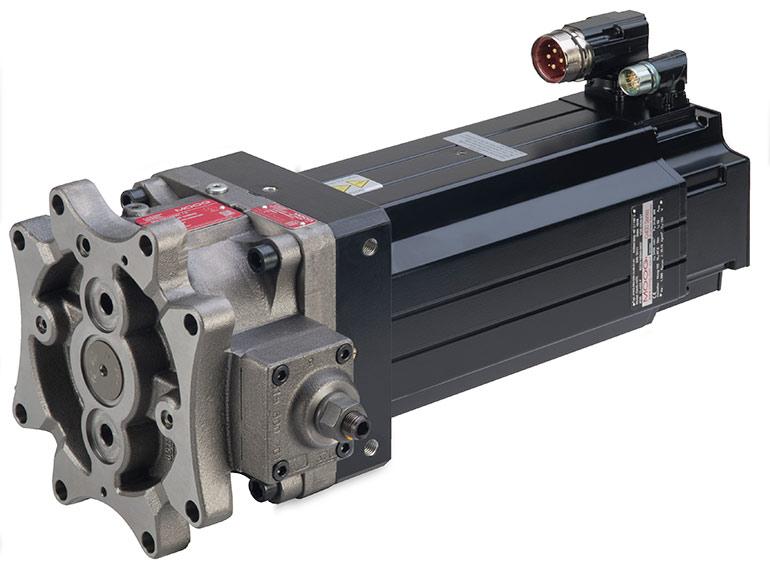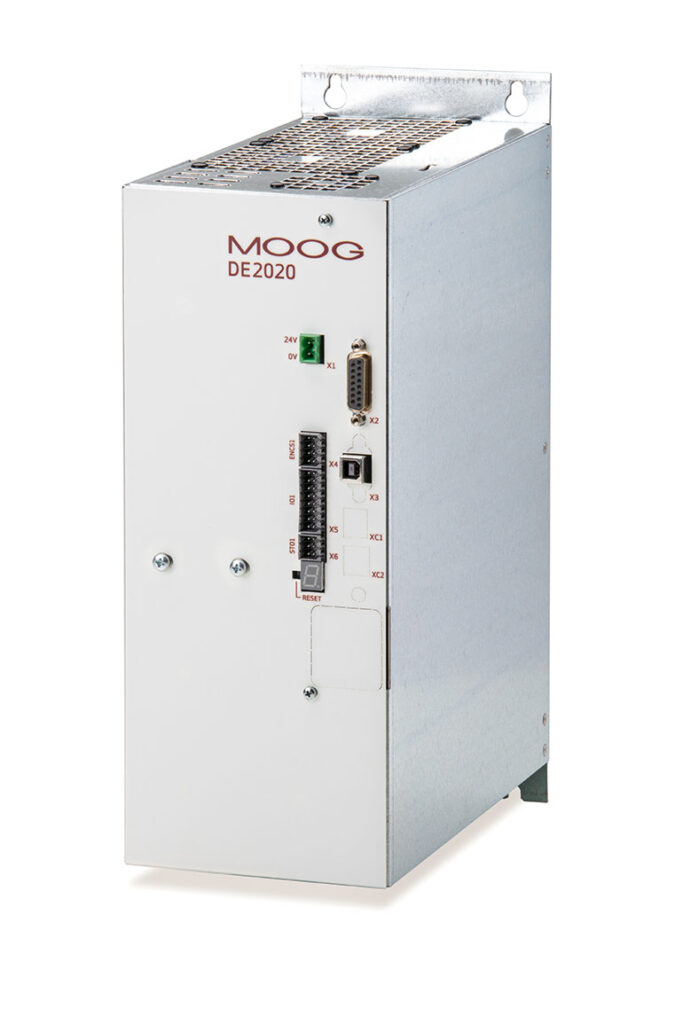Moog helped a manufacturer of metalworking presses develop a first of its kind electrohydraulic high-speed press that recovers energy lost during depressurizing the machine’s hydraulic fluid. The technology regulates energy use with a Moog DE2020 energy management system to keep the power drawn from the grid at a steady, standard load.

Metal forming press
Image courtesy of Moog Inc.
The machine maker’s original design for its metal press used a variable-speed hydraulic pump and servo drives with each cycle experiencing two energy peaks for motion acceleration and deceleration. With each cycle, operators place metal into the machine to press, stabilize, and remove the workpiece. While some manufacturers already recuperate and reuse braking energy, the press maker joined forces with Moog to take energy efficiency to a higher level.
In developing its new electrohydraulic high-speed press, the machine maker upgraded the prior model’s hydraulic pumps with Moog’s high efficiency electrohydrostatic pump unit (EPU), controlled by servo drives. Moog’s DE2020 energy management system regulates the supply of energy. Before initial start-up and during the machine’s cycles, the DE2020 charges capacitive modules with an optimized current level and supplies power. Moog engineered the capacitive modules to handle energy exchange, limiting loss to only the machine’s mechanics. The modules provide the energy peaks to build up the machine’s fluid pressure and power movement within the cycle. Recuperation recharges the modules when the machine decelerates and depressurizes its hydraulic fluid.

Moog’s EPU actuator
“The DE2020 only supplies the energy absolutely necessary for the machine to do the required work, where this energy use ultimately can’t be avoided,” said Franco Talpone, senior applications engineer for Moog. “This means the energy drawn from the power grid stays at a steady level, a constant load without peaks. So, the power connection doesn’t have to be sized for a peak load as was previously the case.
“With this technology – and without sacrificing quality – Moog reduced the drive systems’ energy consumption by approximately 50 percent, an unbelievably high score,” added Talpone.
Moog’s design means the owner of the new press has lower costs and better utilization. And, with connected loads, the press owner can run multiple electrohydraulic high-speed machines on the same energy grid, since there are no energy peaks to manage. The solution also offers cost savings that pay for the investment in a relatively short timeframe. The manufacturer’s new press outfitted with Moog’s energy management solution consumes, on average, only 20 percent of the traditional machine’s design.

Moog’s DE2020 energy management drives
To engineer the new metal forming machine, Moog’s engineers applied electrohydrostatic pump units (EPU), servo drives, the DE2020 power controller, DF2020 DC link choke, and high efficiency capacitive banks. The modular, plug-and-play solution creates maximum efficiency, minimizes power loss, and requires less space for power electronics.
“We cultivate close customer relationships, which allow us to customize the solutions to the very specific requirements of each application,” said Talpone. “The energy-savings and reduced peak loads that come from this solution can be easily transferred to electromechanical presses and other machines using electrohydraulic or even classic hydraulics.”
Moog Inc.
moog.com
Filed Under: Components Oil Coolers, Pumps & Motors, Trending